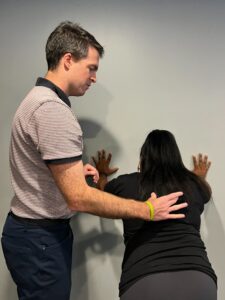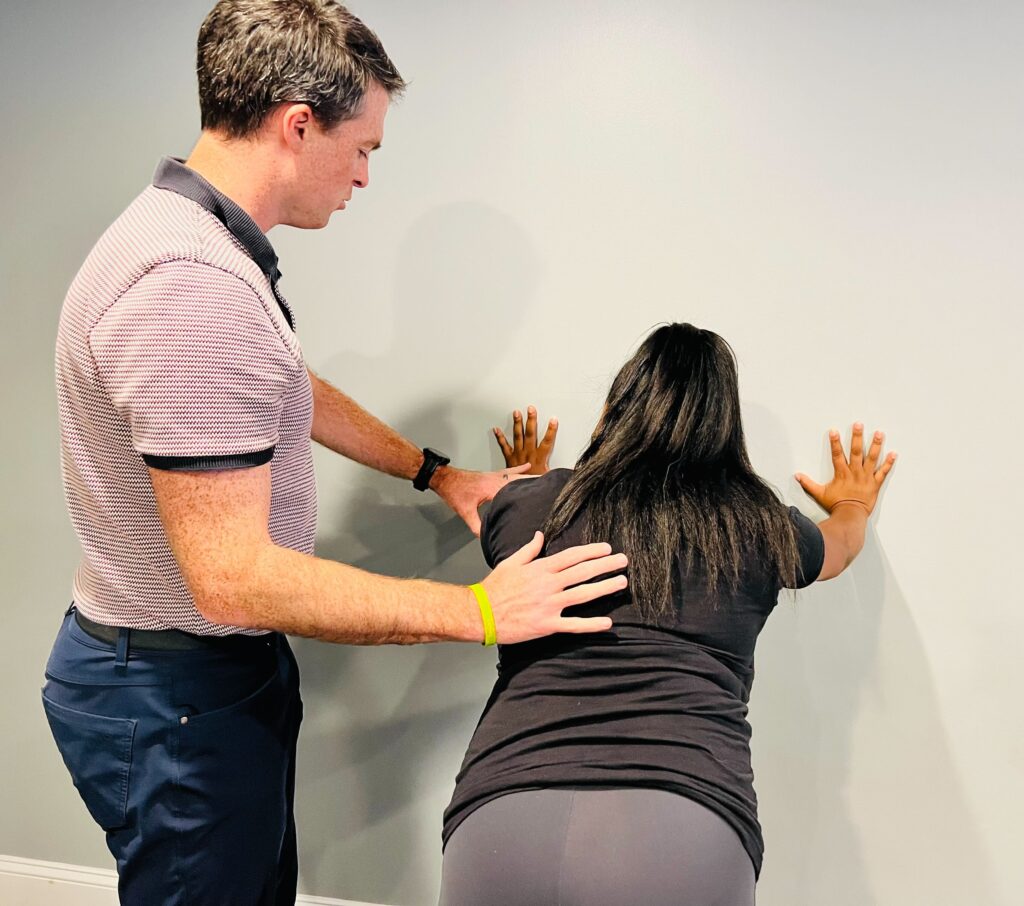Sciatica is an umbrella term that refers to pain anywhere along the path of the sciatic nerve: from the low back, through the buttocks and then down the outer/back part of the thigh and calf and to the underside and outside of the foot. It is estimated that 40% of individuals experience this pain during their lifetime. Commonly, the causes of sciatica could be from degenerative, bony changes within your spine like osteoarthritis or bone spurs, spinal stenosis, or disc bulges.
However, what about when you have this sciatica-like pain without your imaging matching up to what you’re feeling? Did that pleasant EMG test yield no positive results? What if you’ve gotten an epidural, or underwent surgery on your back, or even had your hip replaced and the pain is still there? Unfortunately, this is all too common and speaks more to the capacity to have dynamic control deficits of our core and hip stabilizers and the related muscular and fascial compensatory tightness and pain that can easily develop over time with the presence of core/pelvic dysfunction. Below we will discuss three common areas that can be related to causing symptoms along the sciatic nerve distribution.
1) Trigger Points Within Gluteal Muscles.
Trigger points can be thought of as small areas of spasms in portions of a muscle that bunch up into the knots that we commonly feel. At times, they can be dormant and relatively pain free. Other times, however, they can cause pain in their exact location or along a common referral pattern any time the trigger point is stretched, touched, or activated via muscular contraction. Gluteus maximus, gluteus medius, gluteus minimus, piriformis, obturator internus, and tensor fascia latae all can refer to various aspects of the typical sciatic nerve pathway, just to name a few. At times it can be more than one of these, but a skilled practitioner should be able to hone in on the culprit. These can respond well to skilled myofascial release from a practitioner or a treatment like dry needling.
2) Fascial Tension or Adhesions.
Fascia is the most abundant connective tissue in the body and lines and connects all of our muscles, organs, nerves and blood vessels. In an optimal condition, the layers of fascia in any one area would be able to slide and glide over top of themselves as we move our body. For a variety of reasons, but sometimes due to overuse or underuse, adhesions can form between these fascial layers. Repetitive breakdown of the fascia with overuse, general stasis with inactivity, or scarring from a surgery or injury can all contribute to fascial adhesions. Once these adhesions are present, we can see limited flexibility/mobility in the area, limited strength output of the muscles and, most importantly to this blog post, pain either in the area of the adhesion, or along fascial lines. Similarly to trigger points, fascia can respond well to skilled manual therapy via myofascial release or instrument-assisted soft tissue mobilization or dry needling in addition to focused stretching and mobility
exercises.3) Sacroiliac Joint.
Although one’s sacroiliac joint is in close proximity and intricately related to lumbar spine and sciatic nerve, it can be it’s own separate source of referred pain into the glute or leg. This is often related to core dysfunction, pelvic obliquity and both of the above-mentioned soft tissue restrictions but a skilled physical therapist should be able to discern if the sacroiliac joint itself is the source of pain. Working on the soft tissues as described above, optimizing mobility and alignment, and reconnecting the deep core system can all help with this pain.
If you’ve tried injections and surgery and the pain is still hanging around, please consider seeing a
skilled physical therapy practitioner who can assess and treat the appropriate source of the leg pain. If you’ve been recommended surgery and want to do everything in your power to avoid it, please make sure someone has ruled out all other alternatives.






